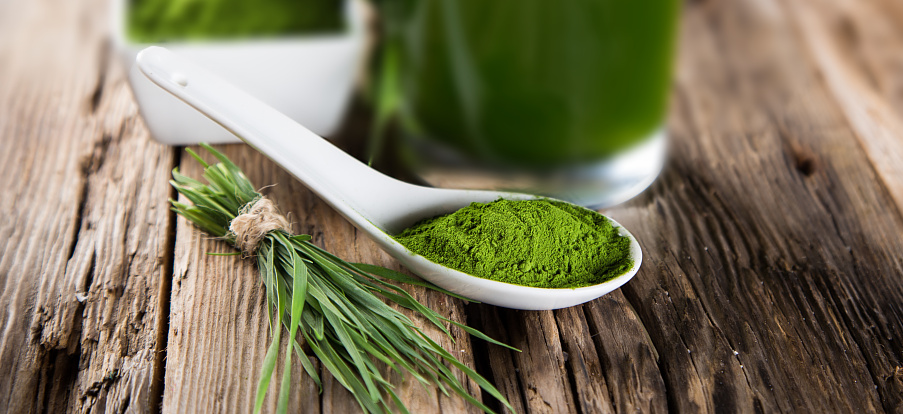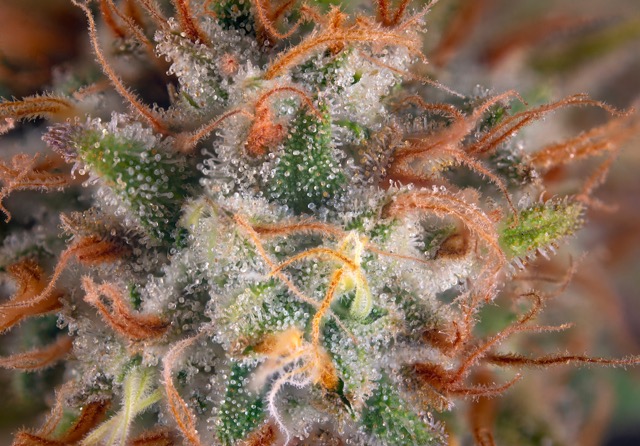
Terpene Talks
Your first question going forward might be, “What’s all the hoopla over terpenes anyway?”
Here’s the “hoopla” in a couple of paragraphs…
We all like to change our moods, especially when we perceive them as negative. Sometimes, our moods change on their own, like when we are famished with hunger and get grumpy. Other times, it’s just a matter of treating ourselves with our favorite “comfort food” – perfect for lifting low spirits or soothing a troubled mind.
A lot of that mood-altering does happen because your tummy got filled or your taste buds were treated to a familiar flavor, but it goes much deeper than that. It is actually involved in the very makeup of different plant foods and herbs we digest. Known as terpenes, these volatile unsaturated hydrocarbons are found in the essential oils naturally produced by many plants.
Two of the most notable and noticeable sources of terpenes can be found in citrus trees and conifers. Just being near either of these trees envelops you with their powerful distinct aroma. And if you spend much time near them, that fragrance will cling to your clothing, hair, and skin. That’s their terpenes at work!
There are over 30,000 of these aromatic compounds, but for hemp flower strains, less than a dozen terpenes appear across the profiles of our varied cultivars. It is these few choice terpenes which will be the focus of these Terpene Talks.
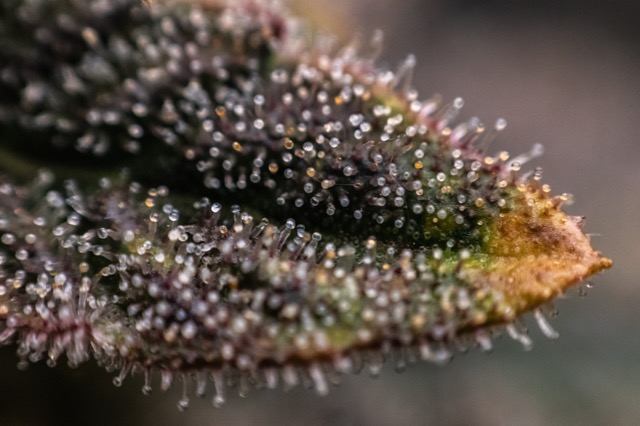
Terpenes and Cannabinoids
Terpenes have generated much interest thanks to the popularity, increased consumption, and fuller understanding of the cannabis plant. Both the natural cannabis plant (containing those higher percentages of THC content which make repressive governments fidgety) and the hemp plant (the cultivated version of cannabis which limits THC content to less than 0.3% of plant material) are rich in terpenes. They are what contribute to the marvelous flavors, fragrances, and effects that cannabis and hemp consumers enjoy.
Terpenes are a big reason why certain cultivars of cannabis or hemp appeal to some individuals more than others. We can attribute variances in individual preferences to the different ways our bodies respond to our environment and the products we put into or onto our bodies (yes, lotions too can benefit from terpenes, even though our skin doesn’t have taste buds). Just like some prefer chocolate over vanilla, or revile tomatoes and love avocados, while their mate feels the opposite, we all discover our own favorites which best serve or suit our basic needs.
A popular saying is “variety is the spice of life” but, knowing what we have learned about terpenes, we can turn that popular saying on its head: spice offers a variety of life experiences and moods (in the form of various food tastes and sensations). No wonder we like adding spices to meats; they not only enhance the flavor of your meat but you could also be enjoying other health benefits from their terpenes.
When you consider the range of potential effects delivered by different cultivars, it cannot all boil down to the cannabinoid alone. There is little doubt that taste and fragrance contribute significantly to the overall experience when consuming different hemp flower cultivars.
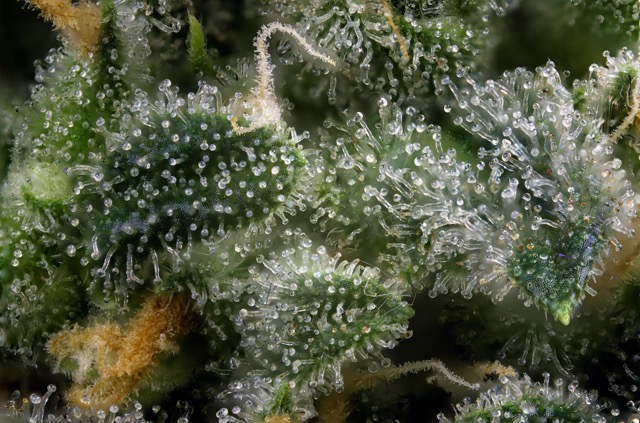
The Two Major Terpene Categories
Terpenes fall under one of two major terpene categories: monoterpenes and sesquiterpenes. These types are explained in greater detail in the following two sections.
MONOTERPENES
Monoterpenes have simpler terpene structures, as every monoterpene contains only two isoprene molecules. Monoterpenes usually display stronger color tones but release lighter fragrances. They are also highly soluble, more volatile, and have a lower boiling point than their counterpart, the sesquiterpenes. Unlike sesquiterpenes which exhibit non-polar compounds, monoterpenes tend to oxidize (or deteriorate) faster, pointing to a possibly shorter shelf life. (However, the shelf life of plant-based materials is considerably longer than animal or dairy products.)
Essential oils that display monoterpenes in their profile include:
- Bergamot
- Frankincense
- Grapefruit
- Rosemary
Monoterpenes also have a reputation for bringing valuable health benefits to the table, such as:
- Antibacterial
- Antiseptic
- Antiviral
- Respiratory Support
As part of an overall wellness plan, including products containing monoterpenes can offer much-valued support.
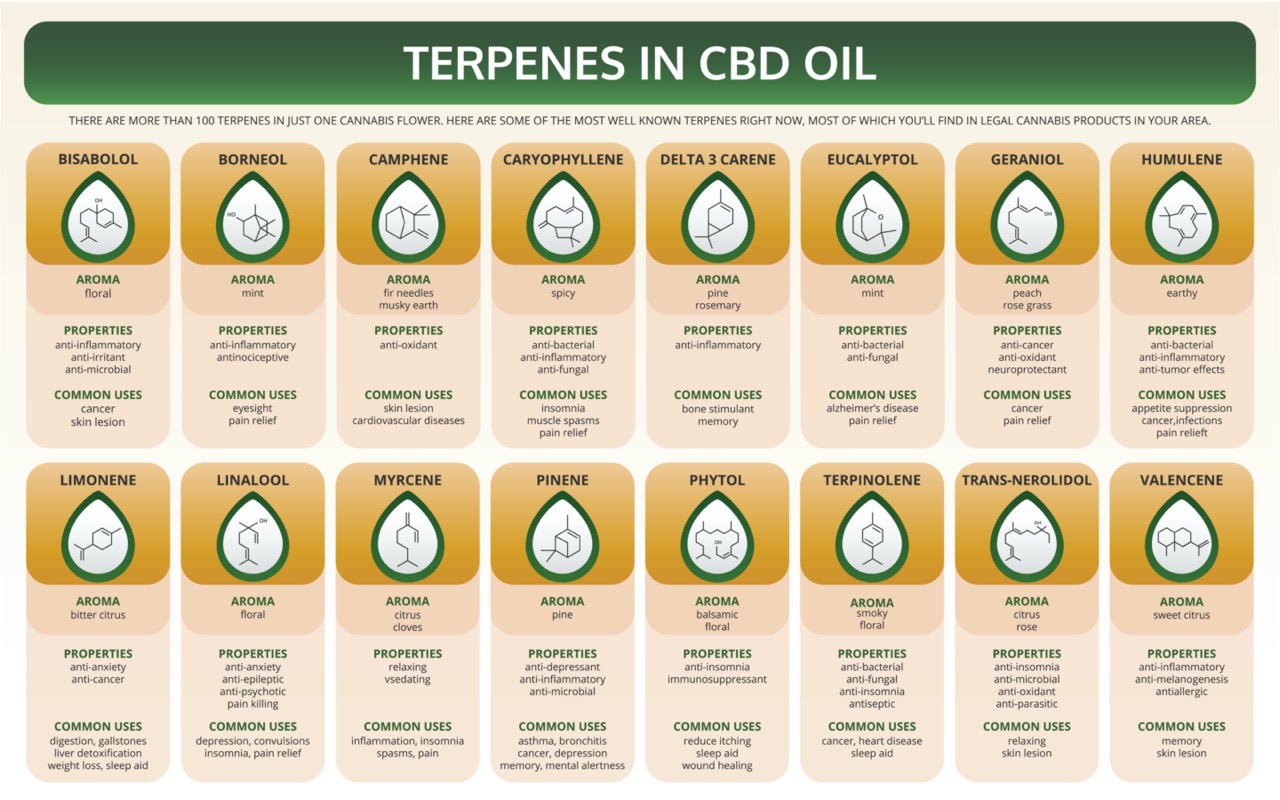
SESQUITERPENES
On the other side of the equation, you find sesquiterpenes. They are considered the more complex of the two terpenes, since each of these terpene types sport three or more isoprene molecules. Sesquiterpenes are generally colorless but the fragrances emitted from this terpene category are typically stronger. In comparison with monoterpenes, sesquiterpenes are insoluble in water, are less volatile, and require a higher boiling point. Since sesquiterpenes are non-polar (or symmetric) compounds, they oxidize (dissolve or crumble) more slowly than monoterpenes (i.e., have a longer shelf life).
Essential oils which contain sesquiterpenes include:
- Cedarwood
- Ginger
- Myrrh
- Ylang Ylang
When it comes to wellness benefits, sesquiterpenes are known for delivering the following properties:
- Antioxidants
- Calmness
- Cellular Repair
- Immunity Support
Enjoying products containing sesquiterpenes is likely an important aspect of any plan for long-term well-being, which makes the enjoyment of hemp strains from Fern Valley Farms that much more valuable.
The Many Uses for Terpenes
Terpenes are bristling with applications and uses, including (to name just a few):
- Cleaning Products – limonene, α-pinene, and β-pinene are all common ingredients in different cleaners (α-pinene and β-pinene form the base of Pine-Sol)
- Cosmetics – various terpenes end up in different cosmetics, including:
- Creams
- Lotions
- Oils
- Ointments
- Serums
- Shampoos
- Soaps
- Unguents
- Hops – that deep full aroma from your beer emanates from sesquiterpenes like α-humulene and β-caryophyllene
- Perfumes – terpenes such as α-pinene, limonene, β-caryophyllene, myrcene, and linalool contribute to the exotic world of perfume fragrances
- Rosin – a by-product of conifer tree resin, it is used in inks, varnishes, and adhesives
- Rubber – uses polyisoprene and is found in tires, golf balls, and even condoms
- Turpentine – mixes various terpenes, with pinene as its main ingredient
As you can see, terpenes are found in unimaginable places and perform a lot of valuable services for humankind beyond improving our moods.
We believe terpenes to be as important as the multitude of cannabinoids (over 120 cannabinoids discovered to date, many of which already demonstrate therapeutic properties) contained in the cannabis plant. After reading the above, you may better understand why our cultivation and harvesting approaches spend equal attention on terpenes and cannabinoids.
Source: fernvalleyfarms
The Art of Extracting Hemp-Derived Live Resin Terpenes at Fern Valley Farms
Medical use of cannabis
Cannabis is used by millions of people to help with the symptoms and pain caused by various medical conditions. We recommend that medical cannabis users discuss cannabis with medical professionals ...
Frequently asked Questions CBD/CBG
What are CBD/CBG oils good for?
Hemp and its components act on the body from the inside - they help restore internal balance (homeostasis) and achieve mental and physical well-being. They su...
Green barley - Superfood or food of the future
Superfood or food of the future - You will also encounter this attribute with green barley. The truth is that it is nothing new. People recognized the effects of green barley a long time ago. Today...
Terpene Talks
Your first question going forward might be, “What’s all the hoopla over terpenes anyway?”
Here’s the “hoopla” in a couple of paragraphs…
We all like to change our moods, especially when we ...






